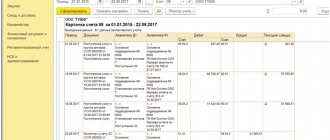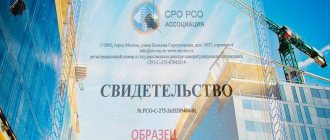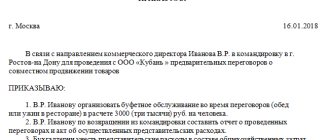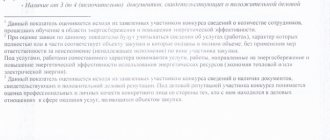Workwear in accounting in 2022
The rules for accounting for workwear have changed since 2022. Previously, the nuances of accounting for workwear on account 10 and the rules for simplifying the accounting of such assets were prescribed in special guidelines approved by Order of the Ministry of Finance of the Russian Federation dated December 26, 2002 No. 135n.
However, as of 2022, these instructions are no longer in force. Now accept such assets for accounting according to the rules of FSBU 5/2019 “Inventories”. The standard is mandatory for all companies except budgetary organizations. Microorganizations with the right to simplified accounting also have the right to state in their accounting policies that they do not apply FAS 5/2019.
Until 2022, companies themselves chose how to account for clothing: as part of materials or fixed assets. The choice depended on the cost of purchasing clothes and how long they would be worn. If it was accepted as MPZ, then its cost was written off as expenses at a time or gradually over the period of wear. And if as part of fixed assets, then the cost was repaid through depreciation throughout the entire period of effective use.
Now there is no such choice - there are only two options regulated by FSBU 5/2019. An important factor for accounting for workwear is the service life of the workwear: up to 12 months inclusive and over 12 months. The cost of overalls according to the new rules is unimportant.
How to account for workwear with an effective use period of more than 12 months
If the period of effective use exceeds 12 months or the duration of the operating cycle, then workwear is reflected in accounting as fixed assets. Account for such assets according to PBU 6/01 and FSBU 6/2020 “Fixed Assets”.
The company has the right to keep records according to PBU 6/01, the document is valid until the end of 2022, or you can switch to using FAS 6/2020 ahead of schedule. It will become mandatory from 2022; it can be applied voluntarily from 2022.
When an organization applies PBU 6/01, the accounting policy sets a cost limit of up to 40 thousand rubles:
- if clothing is worn for more than 12 months, but costs less than the established limit, it can be included in inventory and the cost can be written off when issued to the employee;
- If clothes are worn for more than 12 months and their value exceeds the limit, the clothes are placed on account 01 and gradually depreciated.
The new FSBU 6/2020 also allows organizations to set a cost limit for fixed assets. But it is not limited by anything; you can set any value limit. Accounting for long-term wear clothing is taken into account as follows:
- the cost does not exceed the limit - attribute it to the inventories, immediately write off the costs at the time of issue to the employee;
- the cost is above the limit - include the overalls in fixed assets and depreciate them.
When capitalizing workwear, reflect it on account 08 “Investments in non-current assets”, subaccount 08-4 “Purchase of individual fixed assets”. Write off the generated initial cost of workwear to the debit of account 01 “Fixed Assets”, subaccount “Fixed Assets in Warehouse”.
How to account for workwear with a useful life of up to 12 months
In accounting, work clothing is treated as inventory if its useful life does not exceed 12 months or it is consumed as part of the normal operating cycle. The cost of workwear can be any (clause “b”, clause 3 of FSBU 5/2019).
The exception is overalls for management personnel; their cost can be immediately written off as expenses at the request of the organization. Fix this decision in the accounting policy (clause “b” clause 3, paragraph 3 clause 2 FSBU 5/2019).
Reflect the work clothes on account 10 “Materials”, sub-account 10-10 “Special clothing and equipment in the warehouse” (item “b”, point 3 of FSBU 5/2019, instructions to the chart of accounts).
invites you to a free webinar on tax optimization in 2022 - we will meet with an expert on October 18. You can sign up here.
The procedure for writing off workwear that has become unusable ahead of schedule
Example (continued)
In May, Design Repair LLC put into operation 1 protective suit, 1 headgear, 12 pairs of gloves and 1 safety glasses.
The write-off method for workwear is defined as a monthly linear write-off, with the exception of gloves - they are written off in full at one time.
After the workwear began to be used, the following events occurred:
| Period | Events | Amount of depreciation written off before damage to workwear | Amount to be written off after damage to workwear | Write-off of the remaining cost of workwear in accounting |
| September | The suit was damaged beyond repair through no fault of the employee | 430 rub. = 1,290 / 12 months × 4 months (June - September) | 860 rub. = 1,290 – 430 | Financial results |
| October | Lost hat due to employee fault | 133 rub. = 320 / 12 months × 5 months (July - October) | 187 rub. = 320 – 133 | For settlements with the employee for compensation of damages |
| November | 12 pairs of gloves were irreparably damaged through no fault of the employee | RUB 1,560 = 130 × 12 pairs | 0 rub. | Not carried out, because the cost of gloves was written off in full in May as part of production costs |
| December | The suit, put into operation in September, was sold due to the end of apartment renovation activities | RUB 322.50 = 1,290 / 12 months. × 3 months (October December) | RUB 967.50 = 1,290 – 322.50 | For other expenses |
The procedure for writing off inventories in accordance with the requirements of the new FSBU 5/2019 is described in detail in the Ready-made solution from ConsultantPlus. If you do not already have access to this legal system, trial access is available for free.
How to take into account workwear with a service life of more than 12 months, but the cost is less than the limit
Workwear that does not meet the criteria for recognition as inventory or fixed assets can be recognized as an expense in the acquisition period.
So, if the useful life of workwear exceeds 12 months or it is used more than within the normal operating cycle, it does not belong to inventories (paragraph 1, paragraph 3 of FSBU 5/2019). And if its value is insignificant, that is, less than the limit, then the accounting policy allows it not to be taken into account in account 01.
At the same time, it is important that the total amount of written-off low-value fixed assets of the same type for the year does not exceed the materiality level established in the organization.
Transfer of workwear into operation: wiring
Reflect the transfer of workwear to employees depending on the accounting method: as part of inventories, fixed assets, or on an off-balance sheet account if the cost is written off as expenses. Make entries based on primary documents that confirm the issuance of special clothing to employees.
Use your own or standardized forms. The unified forms were approved by Resolution of the State Statistics Committee of December 30, 1997 No. 71a, these are:
- demand invoice in form No. M-11;
- limit intake card according to form No. M-8;
- invoice for the release of materials to the third party according to form No. M-15;
- record sheet for the issuance of special clothing according to form No. MB-7.
In your accounting policy, state that you use standardized forms or your own to account for the movement of workwear, regardless of how its cost is reflected in accounting. Next, we will tell you in more detail about the methods of accounting for the transfer of workwear to employees for use.
Special work clothes
Every employer is obliged to comply with regulations on working conditions and labor protection, as well as safety rules for employees in the workplace.
Among these responsibilities is the issuance of personal protective equipment, including special work clothing. Workwear, the write-off norms for accounting for which will be given below, is issued to the following labor categories:
- workers with harmful and dangerous working conditions;
- employees employed in jobs with special temperature conditions or pollution.
The provision of special clothing (SO) is regulated by the Labor Code of the Russian Federation (Articles 212, 221 of the Labor Code of the Russian Federation), as well as the Intersectoral Rules for Providing Workers with Special Clothing (Order of the Ministry of Health and Social Development No. 290n dated 06/01/2009) and Model Standards of the Ministry of Labor (Order No. 997n dated 12/09/2014) .
According to these regulations, all employee personal protective equipment must be certified and issued to employees free of charge. The basis for issuance is the results of a special assessment of working conditions, as well as standard industry standards established by current legislation.
An institution has the right to establish its own standards for issuing and the type of RM in internal documents.
Write-off of the cost of workwear to inventories
When transferring workwear to employees, write off its expenses to cost accounts, for example, account 20 “Main production”, account 44 “Sales expenses” and similar (clause 18 of PBU 10/99). Reflect the transfer of workwear for use to employees by posting:
- Dt 20 (44...) Kt 10-10 - overalls were issued to employees for use.
If necessary, after write-off, you can control the further use of workwear. In addition, such control will ensure that the working clothes issued to employees do not expire. You can keep a record of special clothing in use.
Also, the cost of workwear can be recorded on an off-balance sheet account, for example, 012 “Assets, the price of which is written off as expenses” or in a separate register. Record workwear in an off-balance sheet account at a conditional price, acquisition price, or other valuation, depending on the procedure established in the accounting policy.
An example of reflecting in accounting the issuance of workwear accounted for as part of inventories
The inventories of Master Manufacturing Company LLC include 10 canvas welding suits with a wear life of 12 months. The actual cost per unit is 1 thousand rubles. In February, the organization issued 8 suits to employees.
The accountant made the following entries in the accounting:
- Dt 20 Kt 10-10 - 8,000 rubles (1,000 rubles × 8 pcs.) - the cost of canvas suits issued to employees has been written off.
- Dt 012 - 8,000 rubles (1,000 rubles × 8 pcs.) - the cost of canvas suits issued to employees is reflected on the off-balance sheet account.
Standards for writing off workwear
The legislation establishes standard standards for the issuance of protective clothing. For some sectors of the national economy, for example, the electric power industry, separate limits for the issuance of workwear have been developed.
The employer, on his own initiative, may deviate from the established limit in the following direction: (click to expand)
- reducing the service life of workwear. The rules establish the maximum service life of workwear. It cannot be increased, but it can be reduced;
- replacement of one type of workwear with another, subject to the need for such an action being agreed upon in writing by the labor safety inspectorate;
- issuing special clothing to those employees for whom it is not provided for by law, subject to an assessment of working conditions and agreement with the trade union.
It is impossible to reduce the write-off standards for workwear. If an employee is legally entitled to two pairs of scrubs per year, then one cannot be issued. This will lead to an administrative fine; in case of repeated violation, it may cause the enterprise to be stopped for up to 3 months.
Thus, if an employer sets its own standards for writing off workwear, then they should increase the protection of the employee and increase his provision of protective equipment, but not vice versa.
Write-off of the cost of workwear as part of fixed assets
Reflect the issue of workwear to employees in analytical accounting under account 01: Dt 01 subaccount “Fixed assets in operation” Kt 01 subaccount “Fixed assets in warehouse”
The cost of workwear, which the organization reflected as part of fixed assets, is repaid through depreciation. The exception is those workwear, the cost of acquisition of which is recognized as insignificant in the accounting policy and is recognized as an expense immediately after being accepted for accounting.
The start date of depreciation in accounting depends on the date of acceptance of the fixed asset for accounting. That is, even the workwear that is in stock in the warehouse needs to be depreciated. After accepting the workwear for accounting, calculate depreciation depending on the applicable standard:
- from the beginning of the next month (clause 21 of PBU 6/01);
- date of adoption or from the beginning of the next month (paragraph “a”, paragraph 33 of FSBU 6/2020 “Fixed Assets”).
Take into account depreciation as part of expenses for ordinary activities (paragraph 5, paragraph 8 of PBU 10/99).
Reflect the write-off of the cost of workwear through depreciation by posting:
- Dt 20 (23, 25, 29, 44...) Kt 02 - depreciation has been accrued for workwear.
According to the new FSBU 6/2020, to calculate depreciation, in addition to the period of use and method of depreciation, the accountant must determine the liquidation value. This is a new concept, but for workwear it can be assumed to be zero. Unlike equipment, vehicles, buildings and other fixed assets, special clothing usually wears out completely. At the end of its useful life, it is unlikely that any amount can be gained from its sale. In this case, the liquidation value can be considered zero (clause 30 of FSBU 6/2020).
Regardless of what documents you use to formalize the transfer to the employee of the special clothing included in the fixed assets, reflect this on the fixed asset inventory card. For such purposes, you can use the unified form No. OS-6 or a form developed in-house.
An example of reflecting in accounting the issuance of workwear accounted for as part of fixed assets
In January, LLC “Production Company “Master””, in accordance with industry standards, purchased two suits for employees (wearing period 24 months) costing 122,400 rubles per unit (including VAT - 20,400 rubles).
According to the accounting policy, property of this value is taken into account as part of fixed assets. The company switched to the new standard FSBU 6/2020 “Fixed Assets” ahead of schedule. In the accounting policy of LLC “Production Company “Master””, in accordance with the new standard, a limit for the recognition of fixed assets was established - 100 thousand rubles.
The accountant made the following entries in the accounting:
- Dt 08-4 Kt 60 - 204,000 rubles (122,400 rubles - 20,400 rubles) × 2 pcs.) - special clothing purchased
- Dt 19 Kt 60 - 40,800 rubles (20,400 rubles × 2 pcs.) - VAT reflected on the cost of workwear
- Dt 68 subaccount “Calculations for VAT” Kt 19 - 40,800 rubles - accepted for deduction of VAT from the cost of workwear
- Dt 01 subaccount “Fixed assets in warehouse” Kt 08-4 - 204,000 rubles - suits were accepted for accounting and issued to employees
- Dt 20 Kt 02 - 8,500 rubles - monthly depreciation calculation using the straight-line method
Writing off the cost of workwear as expenses
Write off the cost of workwear that does not meet the criteria for recognizing it as inventory or a fixed asset to expense accounts, for example, account 20 “Main production”, account 44 “Sales expenses” and so on.
In addition, the composition of inventories may not include workwear for management personnel. This decision is made by the organization and enshrined in its accounting policies. Then, in the period in which the workwear was purchased, its cost is written off to account 26 “General business expenses” (paragraph 3 of clause 2 of FSBU 5/2019).
Reflect the issue of such special clothing to employees in analytical accounting using an off-balance sheet account, for example, 012 “Inventory and materials, the cost of which is written off as expenses.” Record workwear in an off-balance sheet account at a conditional price, acquisition price, or other valuation, depending on the procedure established in the accounting policy.
Reflect the costs on the basis of primary documents, such as an invoice, a universal transfer document, and others. If necessary, as well as in accordance with the internal document flow rules, you can issue an accounting certificate. Take into account the issue of protective clothing also in the accounting registers.
An example of reflecting in accounting the issuance of special clothing taken into account as part of the expenses of the current period
In January, LLC “Production Company “Master””, in accordance with industry standards, purchased 10 jackets with insulating lining (wearing period - 24 months) for employees of the main production at a cost of 2,880 rubles (including VAT 480 rubles). This amount is less than the limit on the value of fixed assets, which is fixed in the accounting policy for accounting purposes.
The accountant made the following entries in the accounting:
- Dt 20 Kt 60 - 24,000 rubles (2880 rubles - 480 rubles) × 10 pcs.) - the purchase of workwear is reflected and written off as expenses for the current period according to the invoice in form No. TORG-12
- Dt 19 Kt 60 - 4,800 rubles (480 rubles × 10 pcs.) - VAT is reflected on the cost of workwear based on the invoice
- Dt 68 subaccount “Calculations for VAT” Kt 19 - 4,800 rubles - accepted for deduction of VAT from the cost of workwear
- Dt 60 Kt 51 - 28,800 rubles (2,880 rubles × 10 pcs.) - jackets paid to the supplier
- Dt 20 Kt 10 - 24,000 rubles (2,880 rubles - 480 rubles) × 10 pcs.) - jackets were issued to employees, the full cost of clothing was written off as production expenses
- Dt 012 - 24,000 rubles - the cost of workwear is taken into account on the off-balance sheet account at the purchase price
- Kt 012 - 24,000 rubles - workwear written off after 11 months of operation
Providing special clothing for workers
The employer is obliged to provide special clothing, footwear and personal protective equipment to the employee if his professional activity is: (click to expand)
- is harmful or dangerous;
- takes place in polluted, severe temperature conditions;
- aimed at eliminating the consequences of natural disasters.
This obligation is recorded in the Labor Code of the Russian Federation and in the Law on Labor Protection. Workwear is purchased with the organization's money, so it belongs to it, and is given to the worker for use. There is no charge for use. Therefore, when a worker quits or is transferred to another place, the workwear he previously received must be returned.
Working clothes are issued according to standards, but in certain cases it is possible to replace one type with another. The main requirement is that the replacement must not reduce worker protection. For example, cotton clothes can be replaced with canvas ones.
What applies to workwear?
Special clothing includes items that are used to protect workers from harmful working conditions. It can be:
- spacesuits;
- special suits;
- vests;
- capes;
- overalls;
- gloves, etc.
In addition to the obligation to provide the worker with personal protective equipment, the employer has the obligation to store, wash, disinfect and repair them.
The list and standards for issuing special clothing are established by law. These norms may be slightly changed by the employer, subject to mandatory agreement with the trade union. Changes to standards are permissible provided that the quality of workwear available at the enterprise is higher than that provided for by standard standards. By agreement with the labor safety inspectorate, it is possible to replace one type of workwear with another. For example, a jumpsuit can be replaced with a robe made of the same fabric.
All protective clothing issued to workers must match their size, height, and working conditions. In addition, it is necessary to take into account the need for certificates for it.
Tax accounting of workwear in 2022
FSBU 5/2019 and FSBU 6/2020 “Fixed Assets” establish accounting rules for accounting for special clothing; they do not affect tax accounting, so everything is still the same.
Workwear with a service life of no more than 12 months and (or) costing no more than 100 thousand rubles, which the company issued according to standard industry standards, should be included as part of material costs during the period of its transfer to operation.
Reflect more expensive and durable workwear as part of fixed assets.
Special clothing purchased to comply with anti-coronavirus requirements should be included as part of other expenses (clause 7, clause 1, article 264 of the Tax Code of the Russian Federation).
When purchasing, reflect the cost of special clothing in the analytical registers for tax accounting of inventories. This is necessary so as not to lose cost data and subsequently recognize material costs. Organizations determine the forms of analytical tax registers and the procedure for maintaining them independently (clause 3, clause 1, article 254, clause 1, article 256, article 314 of the Tax Code of the Russian Federation).
Statement of the problem of accounting for special clothing and personal protective equipment
Accounting for special clothing and personal protective equipment is not a new task. All enterprises that are in one way or another connected with providing workers with protective equipment have already established processes for recording and issuing special clothing. The provision of PPE is one of the important indicators of checking compliance with labor protection requirements. In production, the cost of providing PPE per 1 employee averages about 7.4 thousand rubles per year, in certain industries up to 24 thousand rubles. The amounts for a large enterprise are significant and it is important to effectively organize the process of providing staff with special clothing and personal protective equipment.
The requirement to provide PPE is determined by Art. 212 and 219 of the Labor Code of the Russian Federation, there are industry standards for the issuance of PPE (Order of the Ministry of Health and Social Development of the Russian Federation dated October 1, 2008 N 541n), there are rules for the provision of workwear and PPE (Order of the Ministry of Health and Social Development of the Russian Federation dated June 1, 2009 N 290n)
What losses from ineffective accounting are observed in enterprises?
- Unreasonable inventories acquired without taking into account the timing of the need turn into illiquid stock over time.
- There is no end-to-end sizing, which leads to a lack of provision of personal protective equipment of the required size.
- The period of use of workwear in operation and the return of unused workwear to the warehouse are not taken into account.
- Too wide a range of protective equipment is purchased to protect against one factor.
- It is difficult to take into account the requirements of standard standards for the provision of workwear, taking into account acceptable analogues and replacements in agreement with the trade union.
- The high complexity of changing calculations when reducing or changing production jobs.
- The inability to track the impact of the provision of personal protective equipment on a reduction in the class of working conditions and a reduction in compensation for workers under Law 426-FZ.
- Monitoring of the actual supply of PPE is not carried out promptly
These problems fall on the shoulders of the labor protection specialist and it is difficult for him to organize correct and effective accounting without a convenient tool. How can you implement the necessary accounting of special clothing? In practice there are 3 options:
- Spreadsheets - Set up spreadsheets and fillable forms, enter and then constantly update information, reconcile with accounting and take into account the facts of issue and return in parallel. The option is the most common and not the most convenient. Not only do the tables have to work in multi-user mode, their development will require writing complex queries and even macros, they, as a rule, tend to get lost, break, and it will be difficult to figure them out without the author.
- Accounting - finalize accounting to include the necessary data in the program, implement in one program all aspects of accounting for workwear, from need to accounting for efficiency. This is the other extreme of implementing this task. At large enterprises, accounting processes are complex and maintaining an adapted regulated accounting program becomes almost impossible as the functions implemented in them increase.
- Special operational accounting program - Create a separate program module that can collect data from various sources existing in the enterprise information systems, and ensure the performance of the required functions and the transfer of results to other blocks. The disadvantage of this solution is that not every automation department can create such a software product and they always have “more important” tasks.
The expediency of using a separate software product is dictated not only by considerations of dividing the functions of the program into different departments, but also by accounting sections, by types and purposes. Let's look at the tasks of accounting for special clothing at an enterprise:
- Installation and recording of workwear sizes and anthropometric measurements of workers
- Setting standards and needs for workwear, safety footwear and personal protective equipment
- Formation of an internal order taking into account warehouse balances and identified needs
- Keeping records in warehouses of workwear and personal protective equipment by size, taking into account the percentage of wear
- Accounting for issued workwear and personal protective equipment, taking into account sizes, percentage of wear and wear period
- Formation of a “Personal record card for the issuance of personal protective equipment” and other printed forms
- Generating reports on needs, supplies, stocks of workwear and PPE
In this case, prompt exchange of data with other accounting systems is necessary:
- Labor Department and Personnel - data on hiring, dismissal, changes in staffing.
- Warehouse accounting - data on the availability of special clothing, issue and return, requirements, limit cards for issue.
- Purchasing - Internal purchase order. Prices and nomenclature of suppliers.
- Accounting - data on depreciation and cost accounting for workwear and personal protective equipment.
- Budgeting - a plan for spending on the purchase of special clothing.
As can be seen from this analysis, the requirements for the program are quite extensive and that’s not all. It must be taken into account that each enterprise is special and each has its own accounting features and requirements for organized processes. There is a division of accounting contours into operational, regulated and management accounting. There are standard processes for procurement, valuation and movement of inventory. For the supply department and the work of storekeepers, the work on the movement of workwear should not differ in any way from the already established processes of movement of goods. For them, workwear is the same product. Accordingly, the occupational safety specialist's program must take these events into account. The program should avoid double data entry. It is unacceptable to duplicate information entry into the system separately for the warehouse and separately for accounting for workwear. Information should be easily transformed and transferred from system to system. If we consider writing technical specifications for automating the accounting of special clothing and personal protective equipment, it is necessary to use a process approach. Study the job responsibilities and functions of a labor protection specialist and design his interaction with other services.
Let's consider a diagram of the business process of accounting for workwear.
Modern business automation platforms can handle such tasks. A striking example of the implementation of this approach is the development by Inform Center LLC of the Occupational Safety and Health software product for 1C:Enterprise 8.





